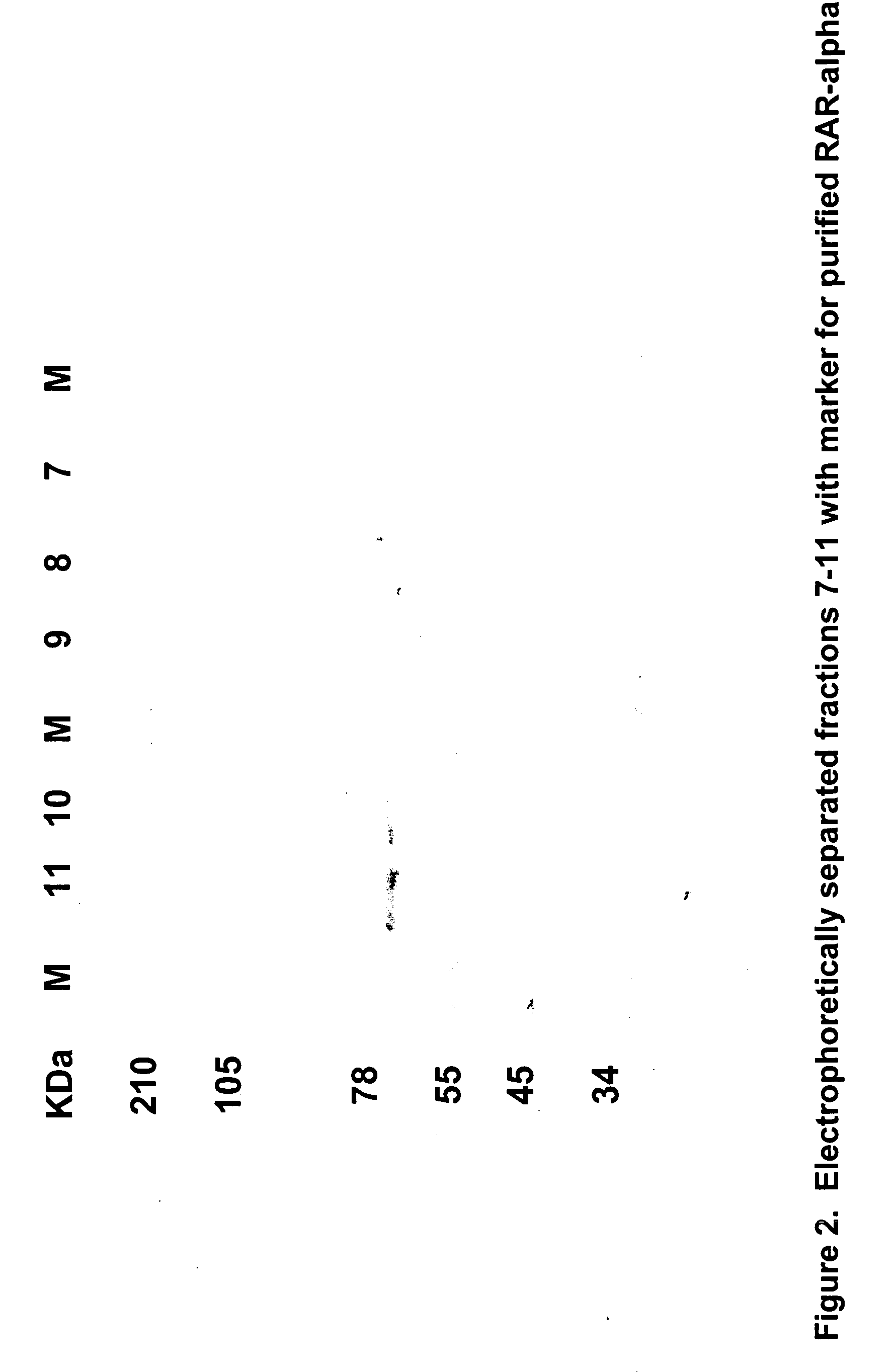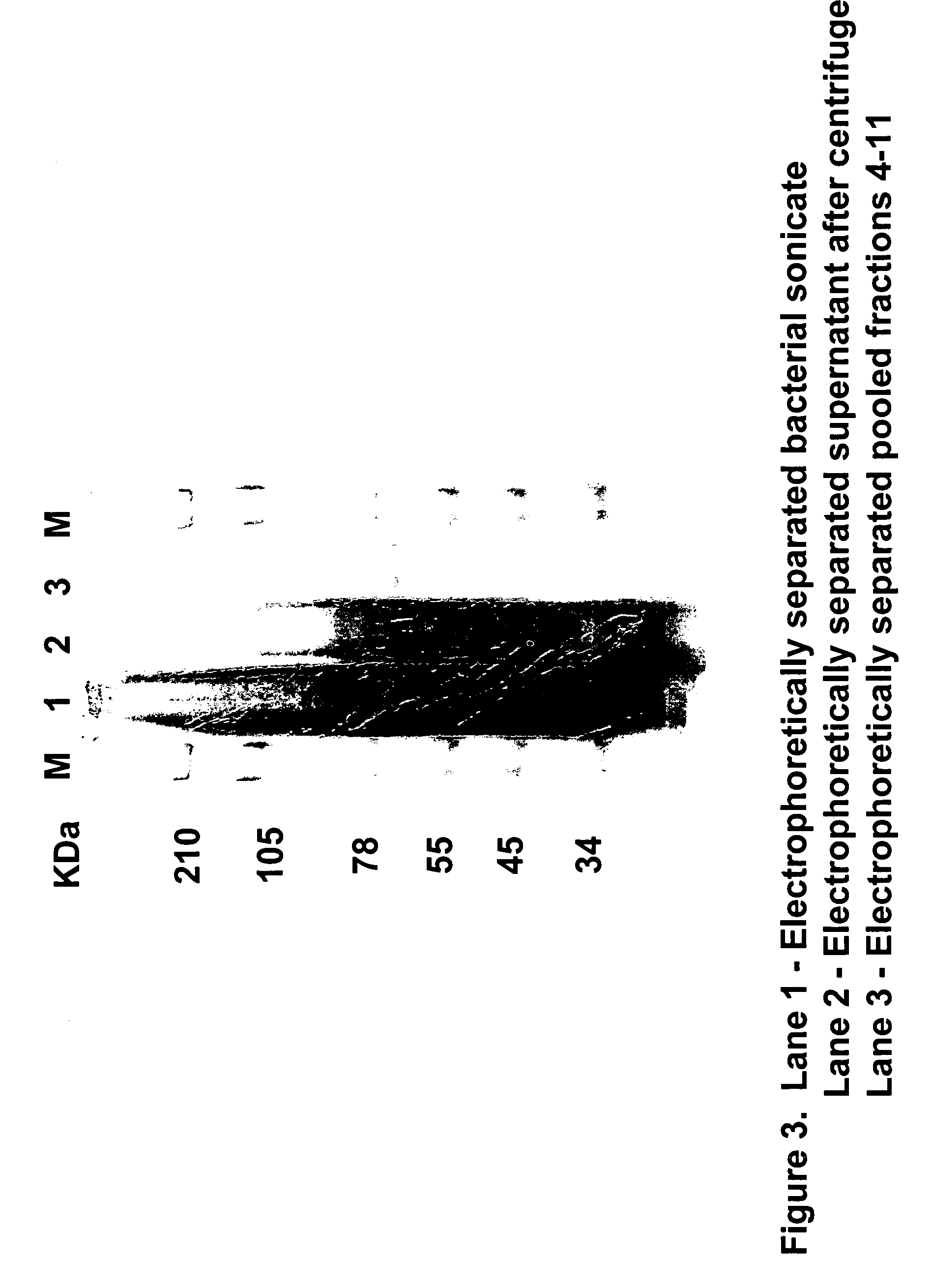Novel therapeutic agents for the treatment of cancer, metabolic diseases and skin disorders
- Summary
- Abstract
- Description
- Claims
- Application Information
AI Technical Summary
Benefits of technology
Problems solved by technology
Method used
Image
Examples
example 1
1-(5-Bromo-2-methoxyphenyl)-adamantane
[0151]
[0152] Reagent grade concentrated H2SO4 (11 mL) was added dropwise to a solution of 1-adamantol (30.25 g, 200 mmol) and 4-bromoanisole (37.21 g, 200 mmol) in 130 mL of CH2Cl2. The light pink solution was stirred at ambient temperature for 20 hours. The solvent was decanted, water (100 mL) and hexane (100 mL) were added and the solid was filtered and washed with hexane and dried to give 31 g of the product as a white powder. The supernatant was diluted with hexane, washed with water and brine, dried over MgSO4 and filtered thru a silica gel pad. The solvent was removed and the solid was recrystallized from hexane to yield 17 g of the product as a white powder.
[0153] Yield: 65 g (75%); white solid; Rf=0.9 in 25% EtOAc-hexane. 1H NMR (CDCl3, 300 MHz) δ 1.78 (s, 6H), 2.08 (s, 9H), 3.81 (s, 3H), 6.72 (d, 1H), 7.24 (dd, 1H), 7.28 (m, 1H)
example 2
1-(5-Boronic acid-2-methoxyphenyl)-adamantane
[0154]
[0155] To a solution of 1-(5-bromo-2-methoxyphenyl)-adamantane (4 g, 12.5 mmol) in 40 mL of THF was added a 2.5M solution of n-BuLi in hexane (5 mL, 12.5 mmol) at −78° C., under nitrogen. The mixture was stirred for 5 minutes at −78° C., triethylborate (1.88 g, 12.9 mmol) was added and the mixture was stirred for an additional 30 minutes at −78° C. The reaction was allowed to slowly warm to room temperature and was quenched by addition of 1N HCl (30 mL). The mixture was diluted with Et2O, washed with water and brine, dried over Na2SO4, filtered thru a pad of silica gel and the solvent was removed to yield the crude product which was recrystallized from chloroform.
[0156] Yield: 0.45 g (12%); white solid; 1H NMR (CDCl3-MeOD 10:1, 300 MHz) δ 1.74 (s, 6H), 2.08 (m, 9H), 2.9 (s, 2H), 3.81 (s, 3H), 6.82 (d, 1H), 7.52 (m, 2H)
example 3
2-tert-Butyl-dimethylsilanoxy-6-bromo-naphthalene
[0157]
[0158] To a solution of 6-bromo-2-napthol (1.12 g, 5 mmol) in anhydrous THF (15 mL) was added imidazole (0.476 g, 7 mmol) followed by TBSCl (1.05 g, 7 mmol) at room temperature under nitrogen atmosphere. The reaction mixture was stirred at room temperature for 40 h and was diluted with ether, washed with brine and dried over anhydrous Mg2SO4. The solvent was removed to yield the crude product, which was recrystallized from methanol.
[0159] Yield: 1.36 g (80%), white crystals. 1H-NMR (CDCl3) δ 0.08 (s, 6H), 1.06 (s, 9H), 7.08 (dd, 1H), 7.15 (s, 1H), 7.47 (dd, 1H), 7.56 (d, 1H), 7.64 (d, 1H), 7.92 (s, 1H)
PUM
| Property | Measurement | Unit |
|---|---|---|
| Temperature | aaaaa | aaaaa |
| Temperature | aaaaa | aaaaa |
| Percent by mass | aaaaa | aaaaa |
Abstract
Description
Claims
Application Information
 Login to View More
Login to View More - R&D
- Intellectual Property
- Life Sciences
- Materials
- Tech Scout
- Unparalleled Data Quality
- Higher Quality Content
- 60% Fewer Hallucinations
Browse by: Latest US Patents, China's latest patents, Technical Efficacy Thesaurus, Application Domain, Technology Topic, Popular Technical Reports.
© 2025 PatSnap. All rights reserved.Legal|Privacy policy|Modern Slavery Act Transparency Statement|Sitemap|About US| Contact US: help@patsnap.com



